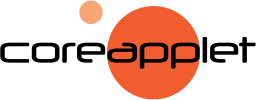Online advertising has become an essential component of any successful marketing strategy. With numerous platforms available, it can be challenging for businesses to determine which one is best suited for their needs. Two of the most popular advertising platforms are Google Ads and Facebook Ads. In this blog, we will compare and contrast these platforms to help you make an informed decision about which one is the best fit for your business.
Reach and Audience Targeting
-
Google Ads:
Google Ads, formerly known as Google AdWords, primarily through its search network, provides an unparalleled reach by tapping into the vast user base of Google Search. Every day, billions of searches are conducted on Google, making it an incredibly potent tool for reaching potential customers actively seeking information, products, or services. Additionally, Google’s Display Network extends this reach to over 2 million websites, videos, and apps, ensuring visibility across a wide array of digital properties. This extensive reach is particularly beneficial for businesses looking to capture high-intent traffic.
Google Ads excels in intent-based targeting. Through keyword targeting, businesses can serve ads to users based on their search queries, ensuring that the ads appear when users are actively looking for related information. Additionally, Google Ads offers robust demographic targeting, allowing advertisers to refine their audience based on age, gender, income, and more. The platform’s advanced features, such as custom intent audiences and remarketing lists, further enhance its targeting capabilities, making it highly effective for capturing high-intent leads.
-
Facebook Ads:
Facebook Ads, leveraging the massive user base of Facebook and its family of apps (including Instagram, Messenger, and WhatsApp), offers extensive reach as well. With over 2.8 billion monthly active users, Facebook provides a platform where businesses can connect with a broad and diverse audience. The platform’s social nature encourages users to spend significant time engaging with content, making it ideal for businesses aiming to build brand awareness and foster community engagement.
Facebook Ads is renowned for its sophisticated audience targeting capabilities. The platform allows advertisers to create highly specific audience segments based on a variety of factors, including demographics, interests, behaviors, and even life events. This detailed targeting is possible due to the vast amount of personal data that Facebook users willingly share. Moreover, Facebook’s Lookalike Audiences feature enables businesses to reach new potential customers who resemble their existing customer base, significantly enhancing the precision of targeting efforts.
Ad Formats and Placement:
-
Google Ads:
Google Ads offers a diverse range of ad formats and placements designed to meet various marketing objectives. The primary format is the text ad, which appears at the top or bottom of Google’s search engine results pages (SERPs). These ads are triggered by user queries, making them highly relevant and effective for capturing intent-driven traffic. Additionally, Google Ads provides display ads that appear on a network of over two million websites and apps, allowing for broad visibility. Display ads can be text, image, video, or rich media, offering flexibility in how businesses present their brand.
Beyond search and display ads, Google Ads includes video ads on YouTube, which can be skippable, non-skippable, bumper, or outstream, catering to different viewer preferences and marketing goals. Another significant ad format is the shopping ad, which showcases product images, prices, and store information directly on SERPs, ideal for e-commerce businesses. Google Ads also supports app promotion ads, helping businesses drive app downloads across the Google Play Store and beyond. The platform’s extensive ad placement options ensure businesses can target users across the web, on mobile devices, and within apps, maximizing reach and engagement.
-
Facebook Ads:
Facebook Ads excels in offering a wide variety of ad formats and placements tailored to different stages of the customer journey. The platform’s native ad formats blend seamlessly into users’ news feeds, stories, and videos, enhancing user experience and engagement. Facebook’s core ad formats include image ads, video ads, carousel ads (which allow multiple images or videos within a single ad), and slideshow ads, providing dynamic ways to showcase products and tell stories.
In addition to these, Facebook Ads offers collection ads and instant experience ads (formerly Canvas ads), which are designed for mobile users and provide immersive, full-screen experiences that can drive high engagement and conversions. These formats are particularly useful for e-commerce businesses looking to create visually compelling shopping experiences. Facebook’s ad placements extend beyond the main app to Instagram, Messenger, and the Audience Network, which allows ads to appear on third-party apps and websites. This wide range of placements ensures businesses can reach users across various touchpoints within Facebook’s ecosystem.
Cost and Budgeting:
-
Google Ads:
Google Ads, is a powerful platform that allows businesses to display ads on Google’s search engine results pages (SERPs) and across its extensive network of partner sites. The primary advantage of Google Ads is its ability to capture high-intent users actively searching for specific products or services. This intent-driven traffic often translates to higher conversion rates, making Google Ads particularly effective for businesses targeting users who are ready to make a purchase.
When it comes to cost, Google Ads operates on a pay-per-click (PPC) model, where advertisers bid on keywords relevant to their business. The cost per click (CPC) can vary widely depending on the competitiveness of the keywords, the industry, and the quality score of the ads. For example, highly competitive industries such as legal services or insurance can see CPCs reaching several dollars per click. However, Google Ads provides comprehensive budgeting options, allowing businesses to set daily budgets and maximum CPC bids to control their spending. Additionally, with features like geo-targeting, ad scheduling, and remarketing, businesses can optimize their ad spend to reach the most relevant audience segments, ensuring a better return on investment (ROI).
-
Facebook Ads:
Facebook Ads offers a different approach, leveraging the vast amount of user data available on the platform to provide highly targeted advertising options. Businesses can create ads that appear in users’ news feeds, stories, and even in the sidebar. Facebook’s strength lies in its detailed audience targeting capabilities, which allow advertisers to segment users based on demographics, interests, behaviors, and even life events. This granularity makes Facebook Ads particularly effective for raising brand awareness, engaging with potential customers, and nurturing leads through retargeting.
In terms of cost and budgeting, Facebook Ads also operates on a bidding system, with options for cost-per-click (CPC), cost-per-impression (CPM), and cost-per-action (CPA) models. The cost of Facebook Ads can be more flexible and often lower than Google Ads, especially for less competitive markets. The average CPC on Facebook is generally lower, making it an attractive option for businesses with smaller budgets. Furthermore, Facebook provides robust budgeting tools that allow advertisers to set daily or lifetime budgets, bid caps, and schedule ads to maximize efficiency. The platform’s analytics and reporting tools also offer detailed insights into ad performance, enabling businesses to continuously optimize their campaigns and improve cost-effectiveness.
Tracking and Analytics:
-
Google Ads:
Google Ads offers a robust suite of tracking and analytics tools that provide comprehensive insights into campaign performance. At the heart of Google Ads tracking is the Google Analytics integration, which allows businesses to monitor user behavior on their website, track conversions, and measure the effectiveness of their ad campaigns. This integration provides detailed reports on metrics such as click-through rates (CTR), conversion rates, and return on ad spend (ROAS), enabling advertisers to make data-driven decisions.
Additionally, Google Ads offers conversion tracking, which can be set up to track specific actions that users take after clicking on an ad, such as making a purchase, signing up for a newsletter, or filling out a contact form. This helps businesses understand the direct impact of their ads on their bottom line. Google’s advanced attribution models also allow advertisers to attribute conversions across multiple touchpoints, providing a clearer picture of the customer journey and the role of each ad in driving conversions. The platform’s real-time reporting and customizable dashboards make it easier for businesses to monitor performance and adjust their strategies promptly.
-
Facebook Ads:
Facebook Ads also provides powerful tracking and analytics capabilities, centered around the Facebook Pixel. The Facebook Pixel is a piece of code that businesses can install on their website to track user actions and conversions. This tool enables advertisers to measure the effectiveness of their ads, optimize campaigns for specific actions, and build custom audiences for retargeting. With Facebook Analytics, businesses can gain insights into how users interact with their ads and website, including detailed demographic data and user behaviors.
The platform offers various reports that cover metrics such as reach, engagement, clicks, and conversions, allowing businesses to assess the performance of their ads comprehensively. Facebook’s attribution tools help advertisers understand how different ads and touchpoints contribute to conversions over a defined period, similar to Google’s attribution models. Furthermore, the ability to create lookalike audiences based on data from the Facebook Pixel can significantly enhance targeting efficiency and campaign outcomes. The real-time data and insights provided by Facebook Ads make it possible for businesses to continuously refine their strategies and improve ROI.
Conclusion:
Both Google Ads and Facebook Ads offer unique advantages and can be effective for different business objectives. Google Ads is ideal for businesses looking to capture potential customers actively searching for products or services, while Facebook Ads is great for building brand awareness and engaging with a wide audience. Ultimately, the best platform for your business depends on your specific goals, target audience, and budget. It is recommended to test both platforms and analyze the results to determine which one yields the best return on investment for your business.






